Here is my circuit. It works well, as described in a book, but I want to understand it better, so I want to check voltage on capacitor. But when I do it, LED doesn't blink and voltage goes up to 4V. When I turn off multimeter - it works again. Мultimeter is connected to capacitor directly. What did I do wrong?
